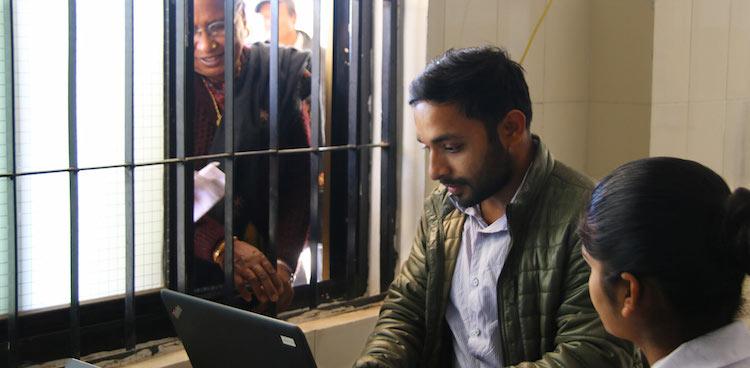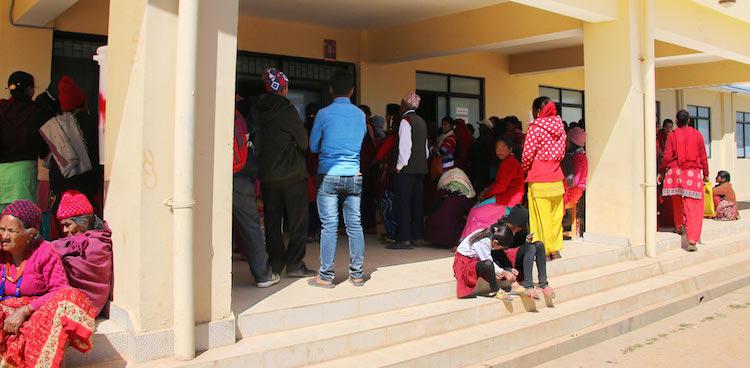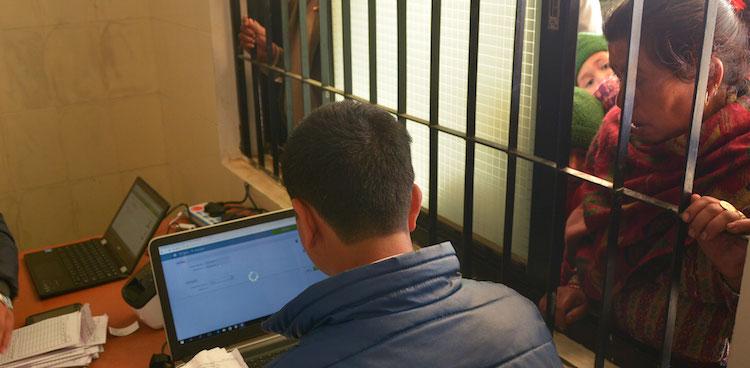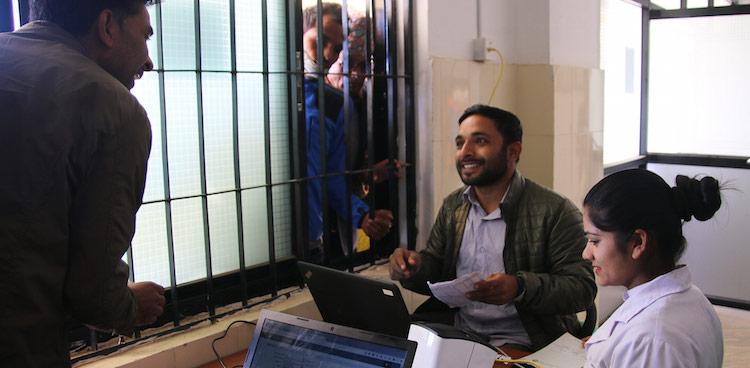
Building Back Better With Technology
Implementing an Electronic Health Record (EHR) in Post-Earthquake Nepal.

Roughly one year ago, the Possible team implemented Nepal’s first integrated Electronic Health Record (EHR). This was a milestone significant not only for its ability to improve patient care, but also because this technology is central to our belief that digitizing healthcare is critical to strengthening healthcare systems.
A fundamental tenet of healthcare delivery improvement is the idea that “you can’t improve what you don’t measure". We need to build smart digital systems that assist in healthcare delivery while generating data that can be used for continuous quality improvement. This digitization should not only be acceptable to both patients and providers, it must also work within the public sector framework to be truly valuable.
With this principle in mind, together with Thoughtworks, we customized an EHR called Bahmni to be an integrated, public sector EHR that tracks patients from hospitals, to primary clinics, to the home.

Recently, our team reopened a hospital in Dolakha District, the epicenter of one of the major earthquakes that struck Nepal last spring. On the opening day, we saw over 100 patients. Now that flow has increased to over 250 people a day.
In addition to providing specialized surgical services and placing special emphasis on management, we also prioritized implementing our EHR to not only build back the healthcare system that was destroyed, but build it back better with technology.
At our core, we are implementers, which, in a world of deep socioeconomic divides, necessitates us to be provider-advocates. To shape the direction of rebuilding, to advance the dialogue of strengthening healthcare systems, and to move forward social equity, we must build back things not just to how they originally were, but how they ought to be.
Rolling out the EHR was a priority for our team for several reasons. Firstly, while universal health coverage is a right protected by Nepal’s new constitution, it remains an aspiration. We see the EHR as a core component of universal health coverage by helping to create an efficient and data-driven accountable healthcare system.
Furthermore, paper-based systems are often costly and inefficient; printing, transportation, and storage, along with the high-risk of losing or damaging paper, leads to inaccurate data, lag time for updates, and unnecessary time spent on reporting, all of which are not ideal to analyze data and improve systems.
Our EHR is also unique because it has been customized with government healthcare facilities in mind, designed for longitudinal patient tracking, use by mid-level practitioners, and integration with the government’s care delivery and reporting system. Beyond this, rolling out an EHR in a second district shows the government and development partners the versatility of this platform, and that it can scale to public sector facilities throughout the country — strengthening the case for our durable, private-public-partnership model.

Setting up the new system wasn’t easy. The whole process took about a month; unstable Internet connection and long bouts of travel for our team members created many barriers. However, we got the networking done and servers configured, and by the fourth week training our clinicians on how to use the new system.
On the first day we registered over 180 patients. (This number is up from 60–80 patients the hospital used to see before our team re-opened the facility and assumed management). Now with increased services and capacity, those numbers can be expected to rise significantly. The EHR will help us deal with this increased volume, putting patient records instantly into the hands of providers, providing them a digital platform to share medical histories, x-rays and lab results with multiple clinicians, and reduce the number of inconsistencies to which paper-systems are vulnerable. All of this leads to improved patient care, or, as we like to say, “solving for the patient".

We asked our Digital Systems Engineer Anant, who leads this implementation process, what he saw as the biggest opportunity of the new EHR. His response: “The opportunity it presents for seamless integration between facility-based and home-based care for improving population level outcomes is exciting. Care shouldn’t stop when a patient leaves the facility — an effective care and follow-up mechanism that the EHR facilitates is essential to our durable healthcare model.”
This article was originally published on Possible's Medium Channel.
Disclaimer: The statements and opinions expressed in this article are those of the author(s) and do not necessarily reflect the positions of Thoughtworks.














